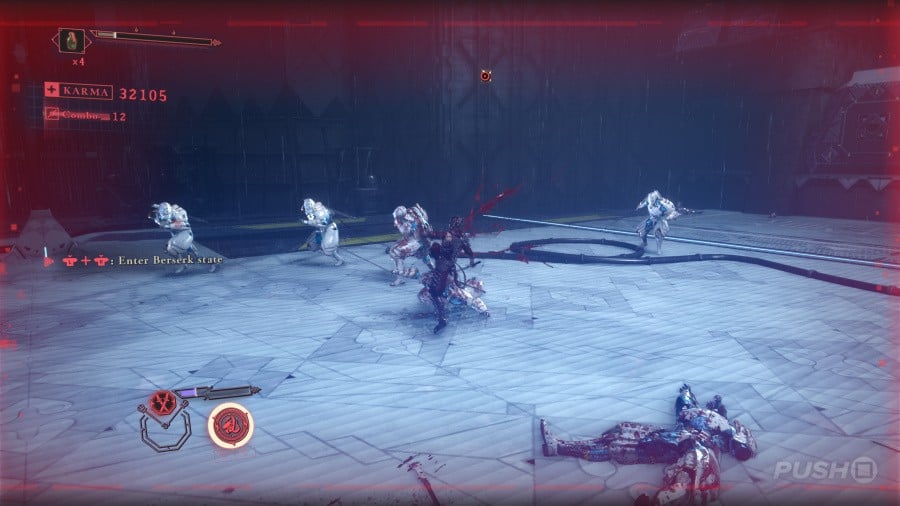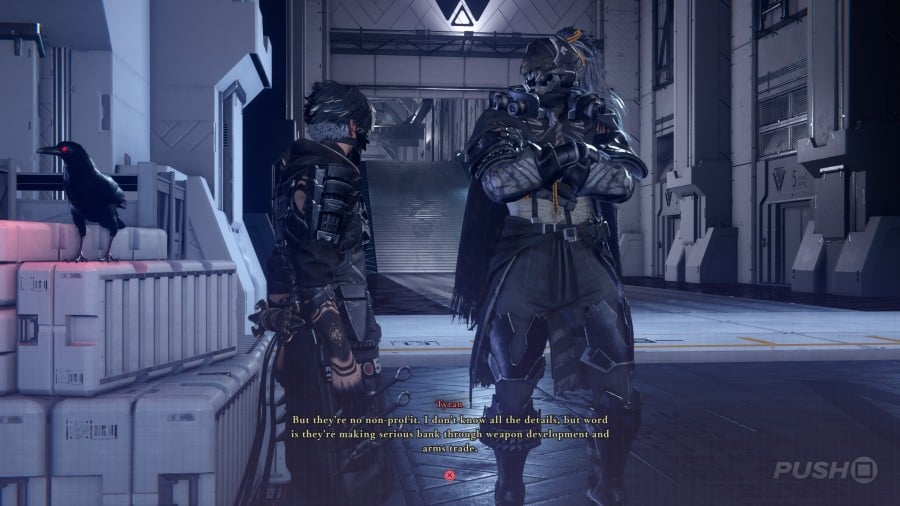Ninja Gaiden 4 feels like a game that came out 15 years ago, and we mean that as a compliment.
This blood-soaked, hard-as-nails action game eschews many contemporary design decisions, instead giving players a traditional, linear experience that’s refreshingly straightforward.
A collaboration between action specialists PlatinumGames and Team Ninja, this is the first numbered sequel since Ninja Gaiden 3 soured things way back in 2012. We’re pleased to say Ninja Gaiden 4 takes a back-to-basics approach while mixing things up just enough to make it stand out from its predecessors.
Case in point: Ryu Hayabusa takes a back seat. The main star of the show this time is Yakumo, a young ninja of the Raven clan who’s capable of wielding a variety of different weapons.
His mission sees him delve into a ruined Tokyo, where the husk of the Dark Dragon fills the city with demons and perpetual rain. Working alongside a mysterious priestess, Yakumo must destroy a series of seals in order to resurrect the Dark Dragon before purifying it — a more permanent solution than simply killing the beast.
The story and characters are one of the weaker aspects of the game; between hammy dialogue and flat characters, it’s difficult to become too invested in what’s going on. It’s mostly just an excuse to send Yakumo on a violent crusade against evil, and that’s perfectly fine in a game primarily concerned with cutthroat action.
As mentioned, Yakumo earns several weapons over the course of the story. Each of them operates slightly differently and are suited to certain encounters. The twin blades are your all-rounder melee weapon; the rapier is great for closing the gap and honing in on a single foe; the staff is ideal for tackling crowds; and the assassin’s tools are your best bet for attacking at range.
Furthermore, you can enter Bloodraven form when you’ve built up enough meter, transforming your equipped weapon into a more powerful variant. For example, the dual swords can be charged to swipe at enemies in a wide radius, while the staff turns into a hammer that explodes on impact, if you get the timing right.
While in this form, you can counter certain attacks and break enemy defences, and it even allows for some wonderfully satisfying one-hit kills with the berserk mode.
There are many combat abilities and weapon skills to unlock as you progress, each outfitting Yakumo with yet more options in battle. He’s given a huge number of tools and techniques that help to keep the combat varied throughout the game.
Ryu himself is very much second fiddle in this game, but he’s fully playable, and post-credits you can replay any level with him instead.
He only has one weapon — his iconic Dragon Blade — which means his base moveset is more limited than Yakumo’s. However, he has a very different feel; his attacks seem much more powerful overall, making up for a lack of versatility with sheer strength.
Additionally, you can exchange meter for a variety of magical Ki attacks, like a fire blast or protective orbs that harm nearby enemies.
While they share some moves and techniques, the two characters are different enough from each other that we came to enjoy playing them both.
Combat is incredibly fast-paced and intense, and while the most basic enemies don’t pose too much of a threat on their own, large groups can easily overwhelm if you’re not paying attention. It’s an action game that forces you to stay alert.
We will say, there are moments where the sheer number of enemies can make the action difficult to read, or hard to react to in time. If you’re in the middle of a combo string and someone fires rockets at you from off-screen, it can be tricky to change what you’re doing at a moment’s notice.
In that way, the game does feel very Ninja Gaiden; you can’t always button-mash your way to success.
Actually, one of our favourite things about this game is its stripped back nature. This is a level-based, 10-hour action adventure with mostly linear stages, a sprinkling of bosses, and new weapons and abilities unlocked steadily throughout.
There are missions that give you additional objectives in levels, and hidden things to find, like Purgatory gates that lead to combat trials, but by and large this is very straightforward.
Its design dodges a lot of what has come to define the action genre in recent years, and in that way, Ninja Gaiden 4 has a refreshingly simple structure we really appreciate.
Perhaps the game’s biggest weak point is its lack of variety in terms of environments and, to a lesser degree, enemies.
The story keeps the focus on the remains of Tokyo, and while there is some diversity, many of the areas are repeated throughout. You’ll be seeing a lot of rain-slicked, neon-lit rooftops, sterile military facilities, and grey-blue demon realms, and will even go through some exact same areas more than once.
Without spoiling things, it’s symptomatic of the narrative and the game’s dual protagonist approach. While the action is very much the beating heart of the game, it’s a shame there isn’t a broader range of locations to explore.
Challenge has always been a defining factor of the series, and this game carries that torch with some tough stages and boss battles. However, what makes it stand out is a vast array of accessibility options that let you tweak the difficulty to your desired level.
There are assists that sacrifice score in favour of automating certain actions, such as wall-running or rail grinding, and on the lowest difficulty setting, you can even automate dodges, blocks, healing, and more.
It goes the other way too; once you complete the game, you unlock a slew of additional challenges as well as an even tougher difficulty mode for the most hardcore players.
Conclusion
Ninja Gaiden 4 is a rock solid action game that delivers on what’s most important — the combat. While some of the surrounding aspects are a little less successful, such as repeated environments and a forgettable story, the intense battles and myriad challenges are where the game shines, whether playing as Yakumo or Ryu. It doesn’t hit every mark, but the simplistic structure, emphasis on technical combat, and even the cheesy performances combine for an action game that feels like it’s from a bygone era, in the best way possible.







